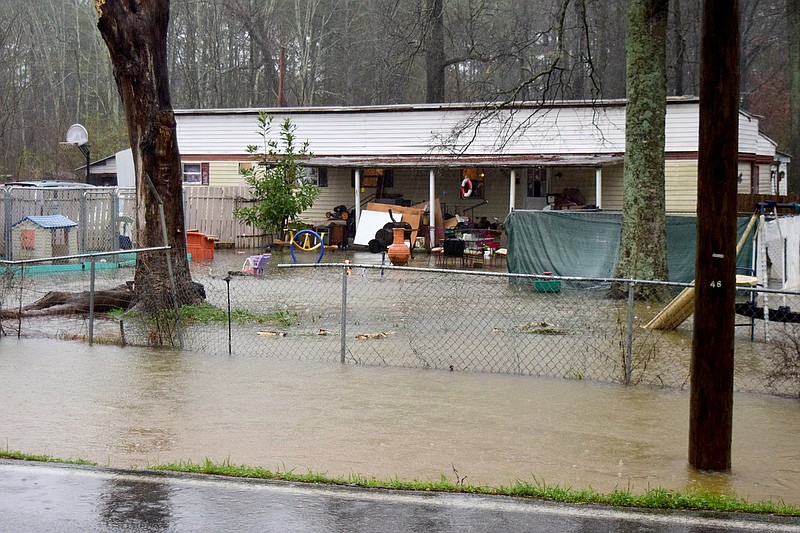The Federal Emergency Management Agency is changing its pricing for the federal flood insurance program to more accurately reflect risks for individual properties, and the change will result in higher monthly rates for most Chattanooga-area policyholders.
FEMA started rolling out the new Risk Rating 2.0 rating plan for new National Flood Insurance Program policyholders starting Oct. 1, and the new system will apply to all existing policyholders beginning in April 2022.
Of the 2,058 policyholders in Hamilton County, FEMA estimates that 71% will see an increase in their monthly premiums under the new methodology - and 29% will see their monthly premiums go down.
Most of the increases will be less than $10 a month.
But for nearly 400 property owners, the increases will be more than that - and a handful will be well more than that.
The increases will affect homeowners and business owners, but more than half of the affected properties are single-family homes.
Area ZIP codes with the most properties affected by the new pricing methodology include 37412 in East Ridge, 37421 in East Brainerd, 37343 in Hixson, 37405 in North Chattanooga, 37379 in Soddy-Daisy and 37415 in Red Bank and Stuart Heights.
The impact varies widely depending on the area. For example, 67% of the 318 policies affected in East Ridge will pay less, including 42 properties, or 13.2%, that will pay at least $100 less per month.
In North Chattanooga, 219 properties, or 92.8%, will pay more, including seven policyholders who will pay at least $100 more per month.
(READ MORE: Survivors grapple with aftermath of deadly Tennessee flood)
Under the old method, homes were rated based on their base elevation and location in a FEMA flood zone.
With Risk Rating 2.0, homes are rated individually using more risk factors - such as flood frequency, distance to a water source and different types of flooding, including heavy rainfall, storm surge, river overflow and coastal erosion, as well as a property's elevation and cost to rebuild.
Since the old method placed policyholders in large groupings not specific to individual properties, lower-risk properties were subsidizing the cost to insure higher-risk properties.
"The program is seeking to fix that imbalance," said Laura Lightbody, project director of the Pew Charitable Trusts' flood-prepared communities initiative. "Cost is the most simple way to communicate risk."
(READ MORE: 150 years ago: Tennessee River rose 58 feet above normal, submerging Chattanooga)
The new pricing methodology does not affect who is required to purchase flood insurance, which Lightbody said is a common misconception about Risk Rating 2.0. The requirement to purchase flood insurance will continue to be based on the property's location within FEMA's flood risk map and whether the property owner has a loan through a federally backed lender.
Lightbody added that it's important for existing policyholders to know they can contact their insurance agent before April to see if their policy is among those that will decrease in cost. If so, the lower rate can be applied now, she said.
"I would anticipate getting some calls from some clients because people normally call me when there are rate increases," Shawn Stiger, Liberty Mutual Insurance lead sales representative, said.
(READ MORE: Better Business Bureau's checklist to avoid buying a flood-damaged automobile)
But if a flood insurance policy is escrowed in someone's home loan, it may take their mortgage company several months to reassess their escrow account and raise their monthly premium.
When writing new policies, Stiger said he gives clients quotes from private flood insurance providers as well as the National Flood Insurance Program, and most of the time the best rate is from a private insurance provider.
Only about 3% of flood insurance policies nationwide are through private insurance providers, Lightbody said, and it's unknown whether Risk Rating 2.0 will affect the private market.
Contact Emily Crisman at ecrisman@timesfreepress.com or 423-757-6508.

